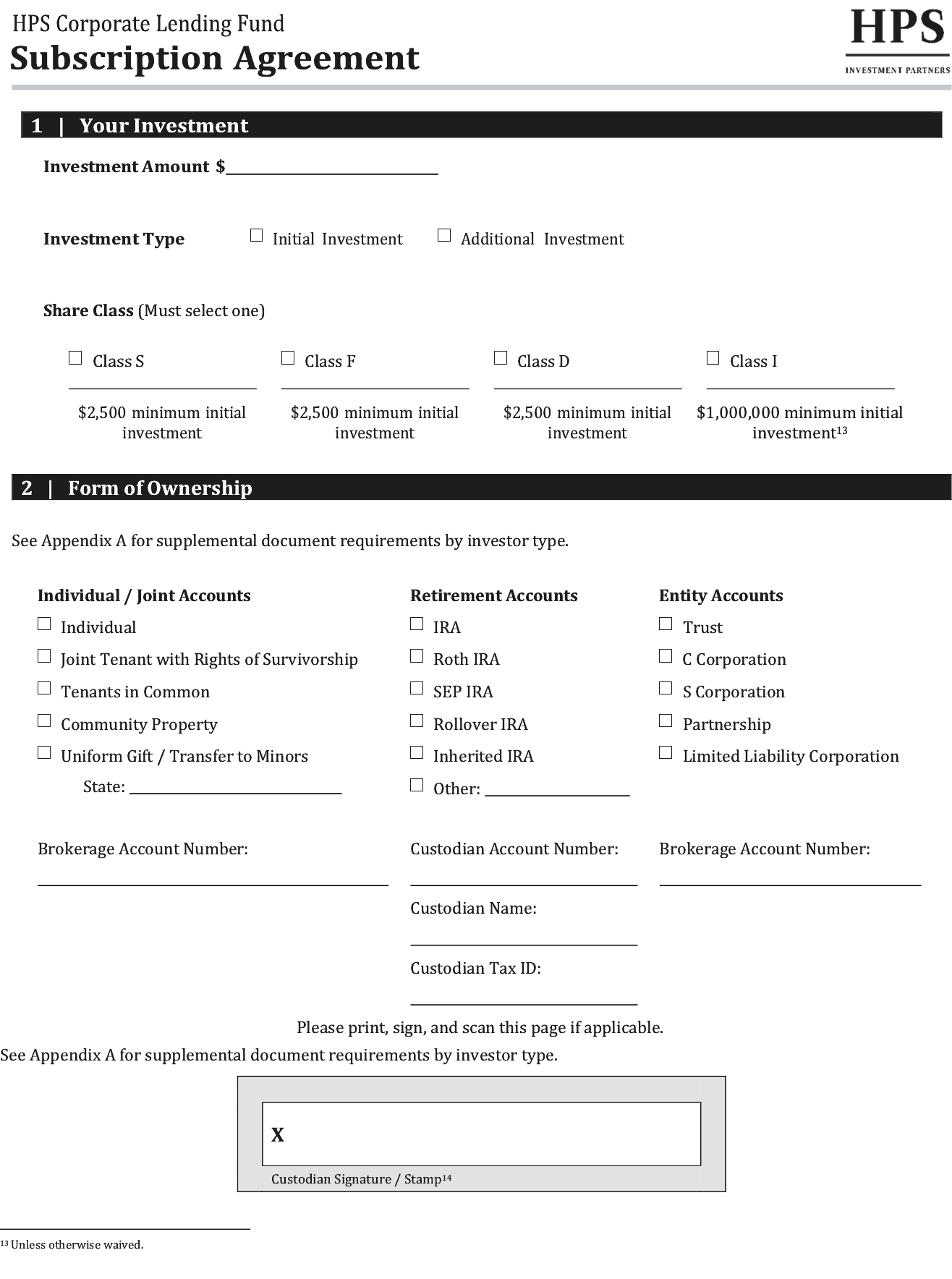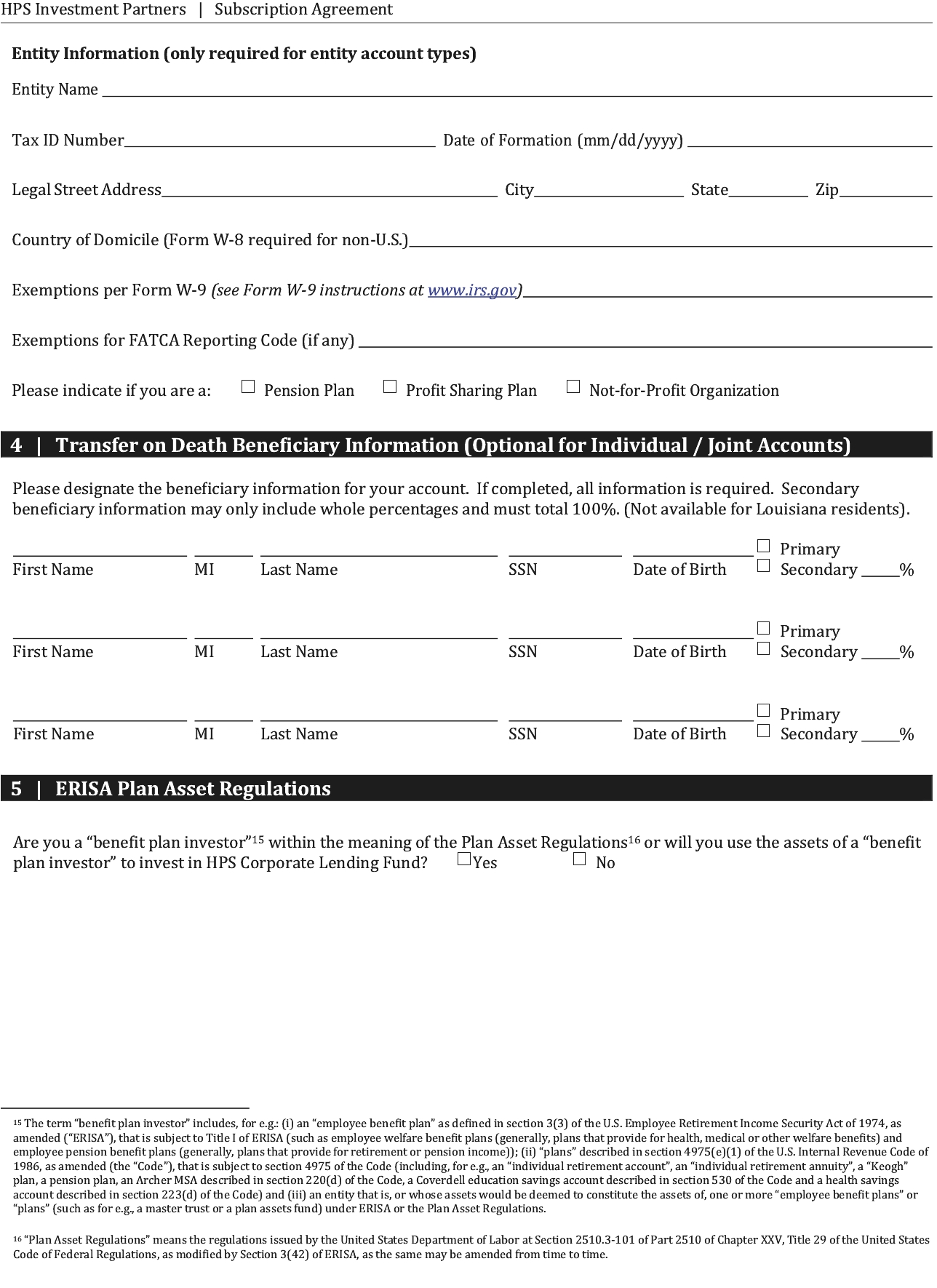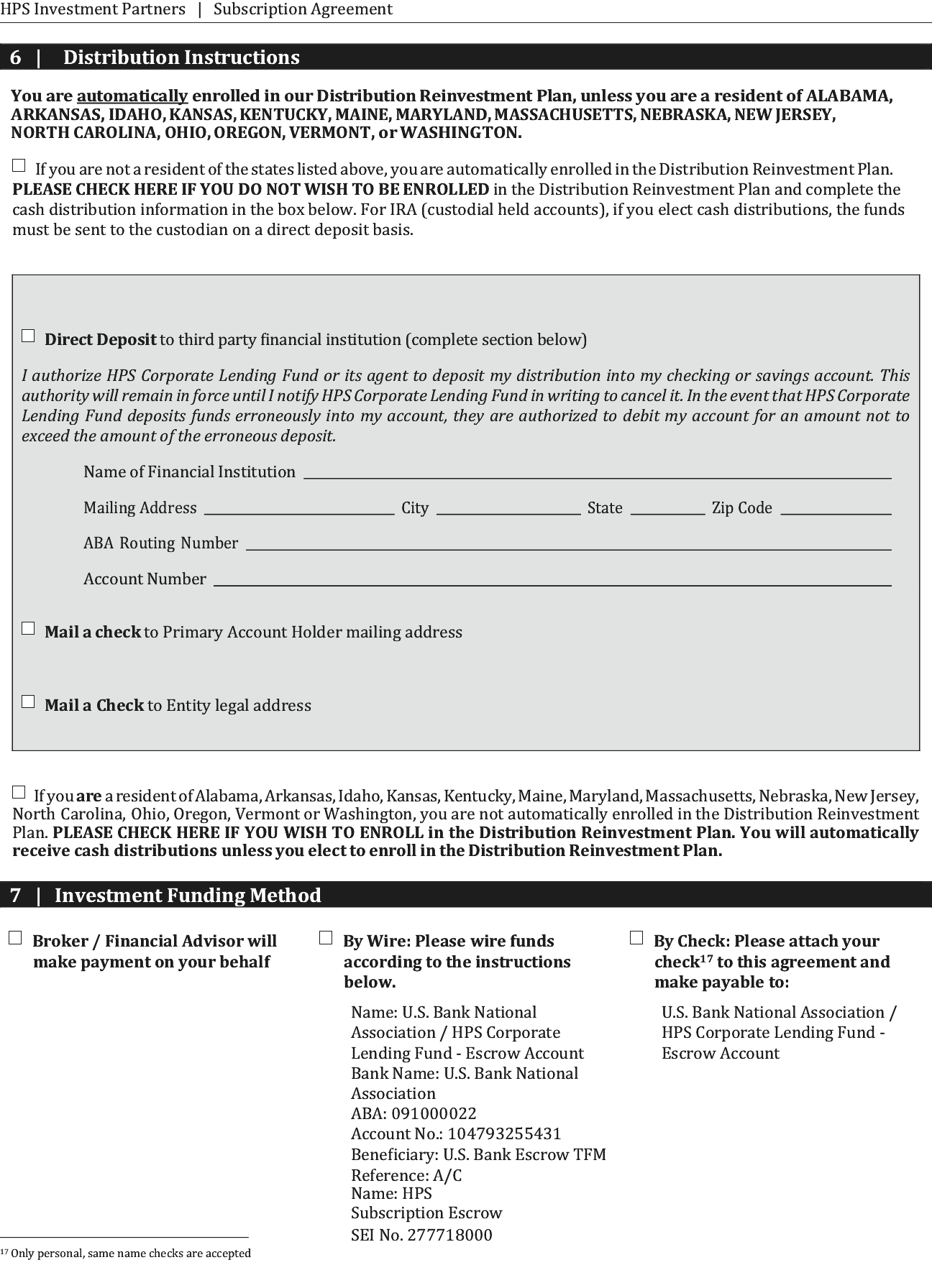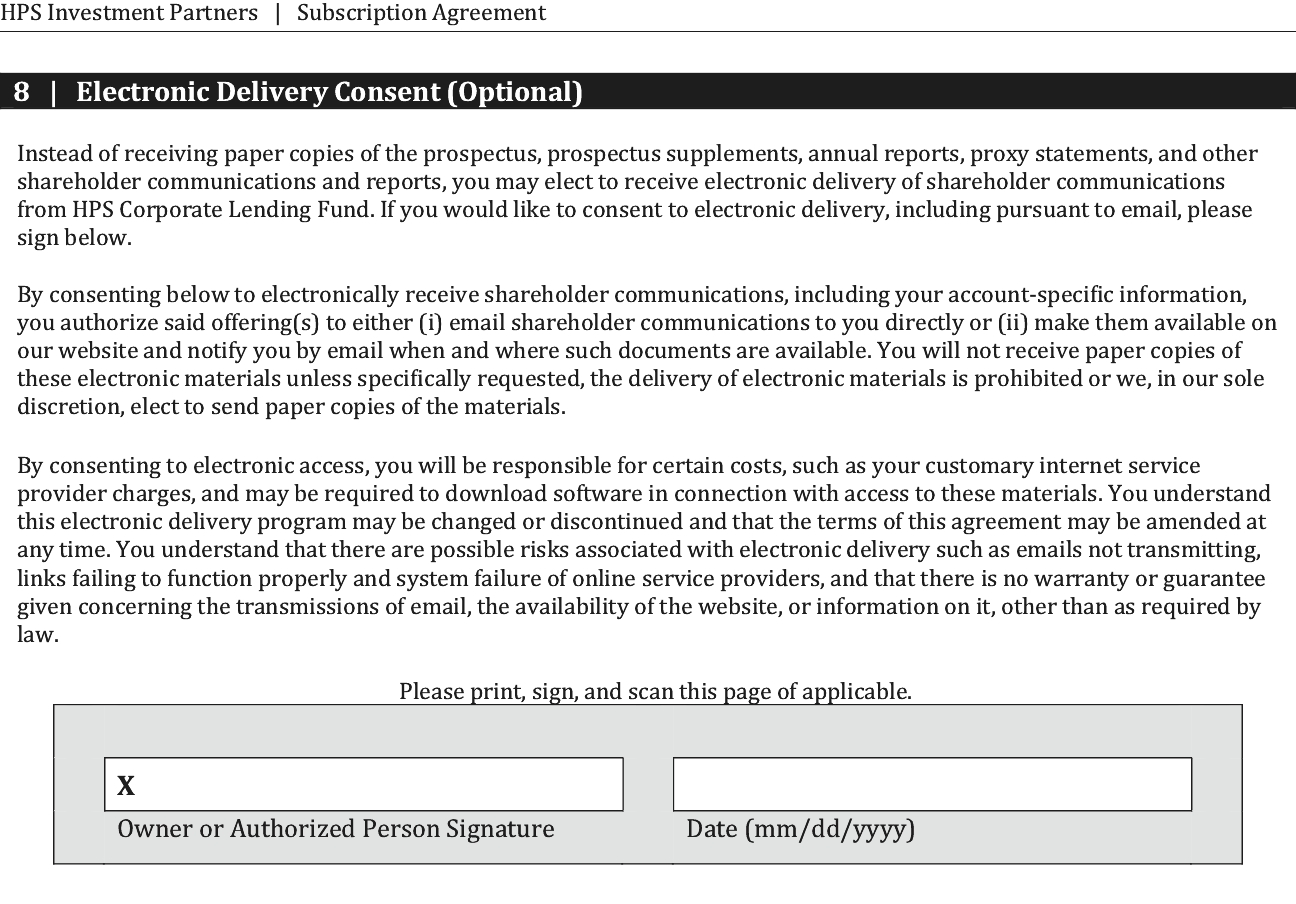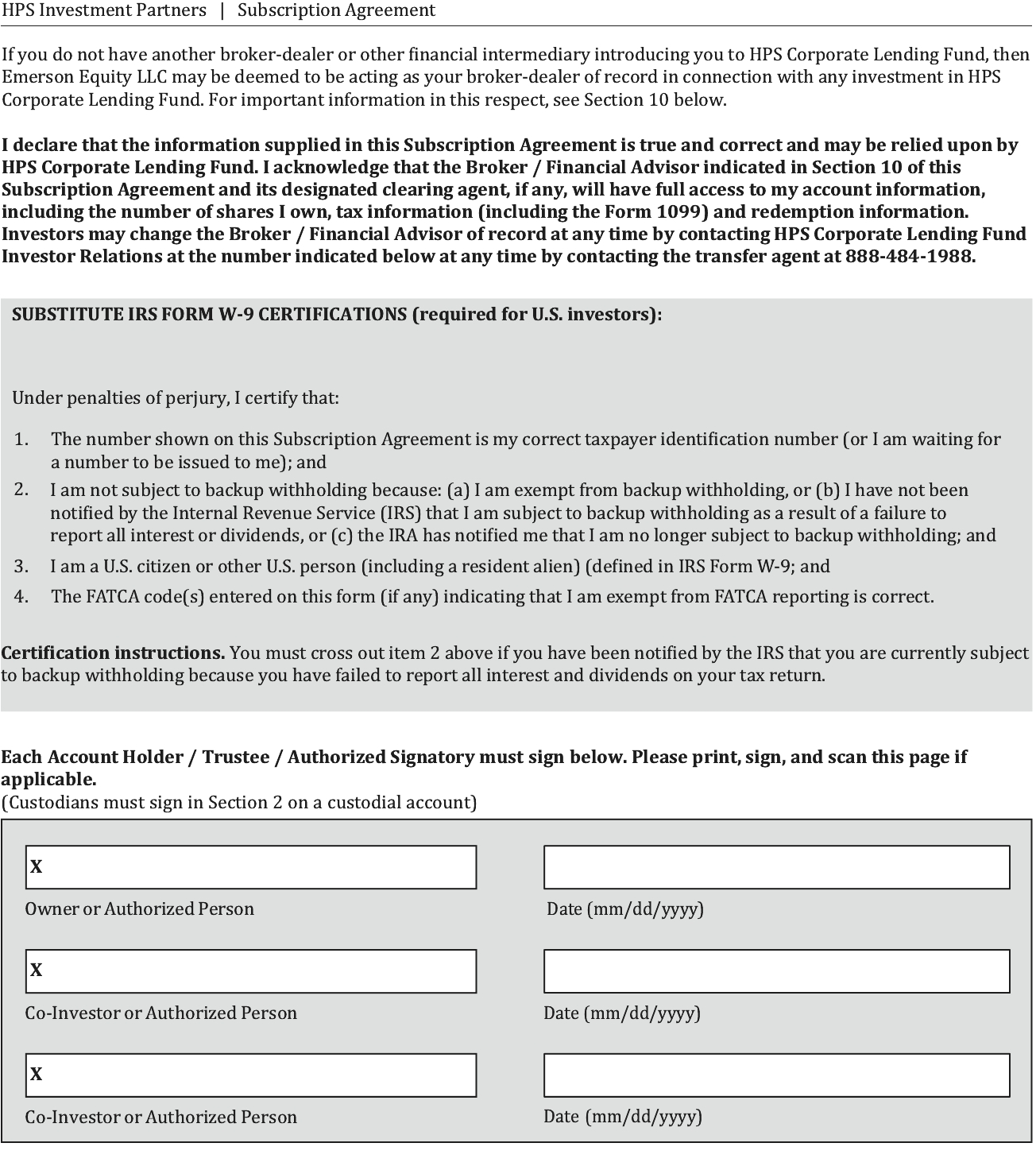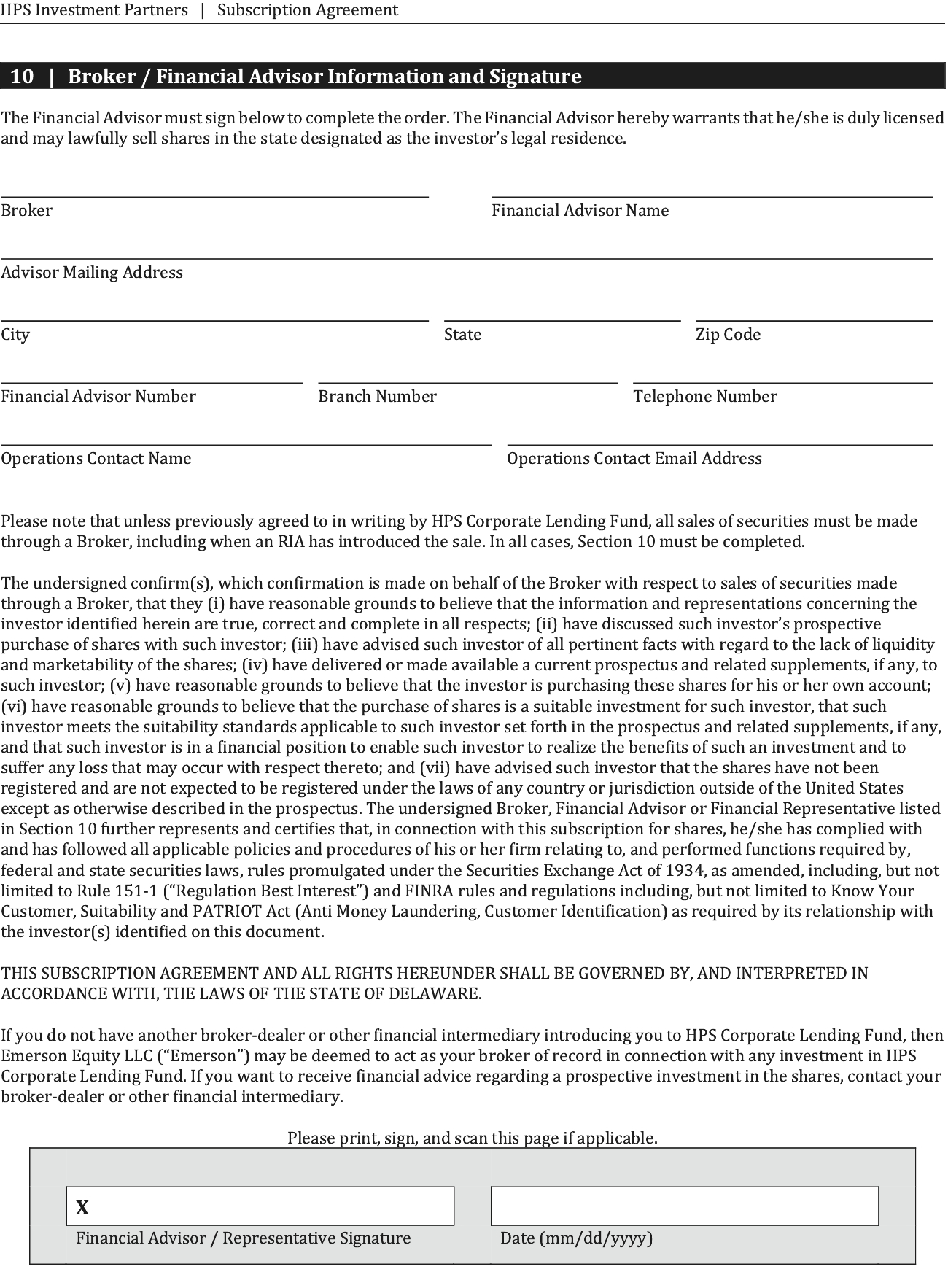
| • | We have no prior operating history and there is no assurance that we will achieve our investment objective. |
| • | This is a “blind pool” offering and thus you will not have the opportunity to evaluate our investments before we make them. |
| • | You should not expect to be able to sell your shares regardless of how we perform. |
| • | You should consider that you may not have access to the money you invest for an extended period of time. |
| • | We do not intend to list our shares on any securities exchange, and we do not expect a secondary market in our shares to develop prior to any listing. |
| • | Because you may be unable to sell your shares, you will be unable to reduce your exposure in any market downturn. |
| • | We intend to implement a share repurchase program, but only a limited number of shares will be eligible for repurchase and repurchases will be subject to available liquidity and other significant restrictions. |
| • | An investment in our Common Shares is not suitable for you if you need access to the money you invest. See “Suitability Standards” and “Share Repurchase Program.” |
| • | We cannot guarantee that we will make distributions, and if we do we may fund such distributions from sources other than cash flow from operations, including, without limitation, the sale of assets, borrowings, or return of capital, and we have no limits on the amounts we may pay from such sources. |
| • | Distributions may also be funded in significant part, directly or indirectly, from temporary waivers or expense reimbursements borne by the Adviser or its affiliates, that may be subject to reimbursement to the Adviser or its affiliates. The repayment of any amounts owed to the Adviser or its affiliates will reduce future distributions to which you would otherwise be entitled. |
| • | We expect to use leverage, which will magnify the potential for loss on amounts invested in us. |
| • | We qualify as an “emerging growth company” as defined in the Jumpstart Our Business Startups Act and we cannot be certain if the reduced disclosure requirements applicable to emerging growth companies will make our Common Shares less attractive to investors. |
| • | We intend to invest primarily in securities that are rated below investment grade by rating agencies or that would be rated below investment grade if they were rated. Below investment grade securities, which are often referred to as “junk,” have predominantly speculative characteristics with respect to the issuer’s capacity to pay interest and repay principal. They may also be illiquid and difficult to value. |
| | | Price to the Public(1) | | | Proceeds to Us, Before Expenses(2) | |
Maximum Offering(3) | | | $4,000,000,000 | | | $4,000,000,000 |
Class S Shares, per Share | | | $25.00 | | | $1,000,000,000 |
Class D Shares, per Share | | | $25.00 | | | $1,000,000,000 |
Class I Shares, per Share | | | $25.00 | | | $1,000,000,000 |
Class F Shares, per Share | | | $25.00 | | | $1,000,000,000 |
Minimum Offering | | | $100,000,000 | | | $100,000,000 |
| (1) | The price per share shown will apply until funds are released to us from the escrow account. Thereafter, shares of each class of our Common Shares will be issued on a monthly basis at a price per share equal to the NAV per share for such class. |
| (2) | No upfront sales load will be paid with respect to Class S shares, Class D shares, Class I shares or Class F shares; however, if you buy Class S shares, Class D shares, Class I shares or Class F shares through certain financial intermediaries, they may directly charge you transaction or other fees, including upfront placement fees or brokerage commissions, in such amount as they may determine, provided that they limit such charges to a 3.5% cap on NAV for Class S shares, a 2.0% cap on NAV for Class D shares, a 2.0% cap on NAV for Class I shares and a 2.0% cap on NAV for Class F shares. We will also pay the following shareholder servicing and/or distribution fees to the Managing Dealer and/or a participating broker, subject to Financial Industry Regulatory Authority, Inc. (“FINRA”) limitations on underwriting compensation: (a) for Class S shares, a shareholder servicing and/or distribution fee equal to 0.85% per annum of the aggregate NAV as of the beginning of the first calendar day of the month for the Class S shares, (b) for Class D shares, a shareholder servicing fee equal to 0.25% per annum of the aggregate NAV as of the beginning of the first calendar day of the month for the Class D shares, and (c) for Class F shares, a shareholder servicing and/or distribution fee equal to 0.50% per annum of the aggregate NAV as of the beginning of the first calendar day of the month for the Class F shares, in each case, payable monthly. The Managing Dealer has agreed to waive shareholder servicing and/or distribution fees for Class D shares and Class F shares for the first nine months following the date on which we break escrow for this offering. No shareholder servicing or distribution fees will be paid with respect to the Class I shares. The total amount that will be paid over time for other underwriting compensation depends on the average length of time for which shares remain outstanding, the term over which such amount is measured and the performance of our investments. We will also pay or reimburse certain organization and offering expenses, including, subject to FINRA limitations on underwriting compensation, certain wholesaling expenses. See “Plan of Distribution” and “Estimated Use of Proceeds.” The total underwriting compensation and total organization and offering expenses will not exceed 10% and 15%, respectively, of the gross proceeds from this offering. Proceeds are calculated before deducting shareholder servicing or distribution fees or organization and offering expenses payable by us, which are paid over time. |
| (3) | The table assumes that all shares are sold in the primary offering, with 1/4 of the gross offering proceeds from the sale of Class S shares, 1/4 from the sale of Class D shares, 1/4 from the sale of Class I shares and 1/4 from the sale of Class F shares. The number of shares of each class sold and the relative proportions in which the classes of shares are sold are uncertain and may differ significantly from this assumption. |

